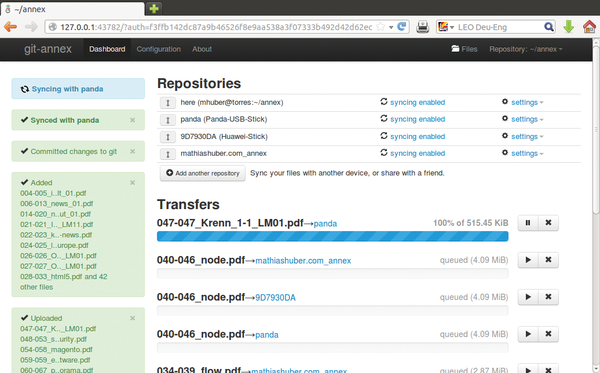

**git commit**: everytime tracked files change, you need to commit changes locally

**git add**: first need to add files to the local tracking system does not do well with large files (e.g. Can host public and private repositories online system for synchronizing local git repository
#Git annex gui code
The Test Branch and the Master Branch have diverged here and have different code - the code from Test Branch can be merged with the Master. These can be made without breaking the code base! Multiple branches are needed to support multiple parallel developments. This means that several parallel versions of your code exist in the repository. By default, Git commits go into the **master** branch. Up until now we have not created any branch in Git. In the image below, you see a single branch. In every commit you only really record ***the changes*** that were made with respect to last commit!Įach of these comments means a has been made !Ī branch is a time-connected series of commits. This will be useful in the future if you want to identify what you did in every commit. Įvery time you do a commit, you usually provide a *commit message* that best describes the change you made. Print("parameters> rootFolder: ".format(nlabel))Ī commit is a way to stamp a change to a file or list of files. difficult to track changes between versions This method relies on saving the same file over and over again with different names. Our current version of the document is corrupted ! We may want to give the text to someone for correctionsģ. Sometimes we skrew up and need to come back to a previous versionĢ. # Why do we need to keep versions of our work?ġ.


 0 kommentar(er)
0 kommentar(er)
